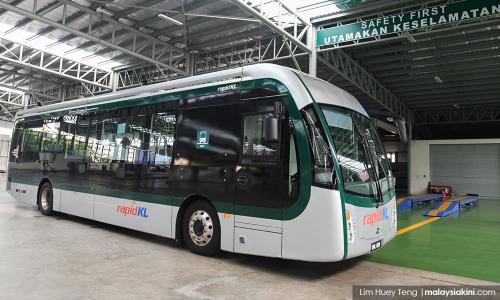LETTER | Mainstreaming public transportation
LETTER | During my secondary school days, I had to wait for the public bus between 30 and 60 minutes by the road, under an electricity pole. There was no bus stop, just the TNB pole.
Somehow the bus driver just knew where to stop, and commuters knew where to wait. The bus schedule and route were disseminated through the word of mouth.
When I was in college, I waited for the bus at a sheltered bus stop. After getting into the bus, I would pay at the fare box. The driver had to make sure every passenger paid before the bus moves. Riding the bus, I would then endure a traffic jam before alighting.
If we had a Bus Rapid Transit (BRT) system, I would be waiting at a bus station equipped with cooling fans and display board with real-time information of bus arrival and route. I would pay my fare before entering the waiting platform so that the bus can leave as soon as I embark. The bus would move on its own dedicated lane undeterred by congestion.
BRT uses better fare collection system, road design, and bus station facility to optimise the reliability and efficiency of buses to encourage people to use public transport.
BRT was born in Curitiba, a city in Brazil in the 1970s. Today, BRT in different shapes and sizes can be found in more than 170 cities around the world. One of them is in Klang Valley.
Malaysia launched the first BRT in 2015, connecting Subang Jaya to Bandar Sunway. It has seven stations serving 16,500 passengers a day.
Johor is implementing an RM2.56 billion large-scale BRT, with 39 stations, to begin operation in 2022. Sarawak had initially planned for a BRT in Kuching but later turned to consider the sleek-looking autonomous rail rapid transit instead while Penang is studying feasibility of having a BRT on the mainland.
The government aims to achieve 40 percent public transport usage by 2030. The BRT could help to achieve the target. Authorities need to study the benefits, weaknesses, and best adaptation of BRT for each locality.
One BRT system for planners to study is Bogota’s Transmilenio, the first recipient of the Sustainable Transport Award by the Institute for Transportation and Development Policy (ITDP).
Transmilenio is a large-scale BRT that started operation in 2000 and managed to shorten average travel time by 22 percent, reduced air pollutants by 40 percent and road collision by 79 percent, increased the city’s GDP by 1 percent, and won more than 90 percent of public approval in its opening year.
The Transmilenio was called “the best bus system in the world” by Bogota’s former mayor Enrique Penalosa, a “success story” by Pertaling Jaya MP Maria Chin Abdullah, and “the world’s most successful BRT” by Penang Forum’s Lim Mah Hui.
The Transmilenio was crowned the “Jewel of Bogota” and often showcased by think tanks such as ITDP as a “model for replication” to promote BRT to policymakers.
Hoping to reproduce Transmilenio’s successes elsewhere, think tanks facilitate the implementation of BRT in various cities as they “know the experts and are able to contact and contract them in order to expedite designs and technical studies.”
Then the system started to break. Overcrowding became too frequent. Passengers had to wait up to 40 minutes to enter the station, before another long wait to board the sardine-packed buses.
Although BRT buses use dedicated lanes, there are still road spaces with accident risk, for example, junctions, pedestrian paths, and merging roads. Collisions involving Transmilenio buses are not uncommon with an average of six cases per day.
The BRT was meant to reduce private car usage but daily cars on Bogota streets increased by 153 percent from 509,000 in 2002 to 1,290,000 in 2012.
The pent-up frustration against the Transmilenio escalated into public riots in 2012, with five BRT stations destroyed. By 2015, the popularity of the “Jewel of Bogota” fell to 20 percent.
Some are calling it “the worst transportation system implemented in a city”. Despite having one of the largest BRT systems on the planet, Bogota was ranked as the world’s most congested city in 2019 Inrix Global Traffic Scorecard, rising from being the third worst in the previous year.
Even the best of the BRTs have pros and cons, like any other transport system. For sure, the BRT fares better than the bus service that uses a TNB pole to designate a bus stop.
Besides the BRT, there are other transport systems such as light rail transit and mass rapid transit that are more efficient and pose less traffic problems.
A newly developed middle-range magnetic levitated train known as "maglev" has added to the variety.
If Malaysia wants to make public transportation a mainstream choice of mobility, we have to start now with the right system, adopt the best practices while anticipating problems with solution.
The views expressed here are those of the author/contributor and do not necessarily represent the views of Malaysiakini.
RM12.50 / month
- Unlimited access to award-winning journalism
- Comment and share your opinions on all our articles
- Gift interesting stories to your friends
- Tax deductable
